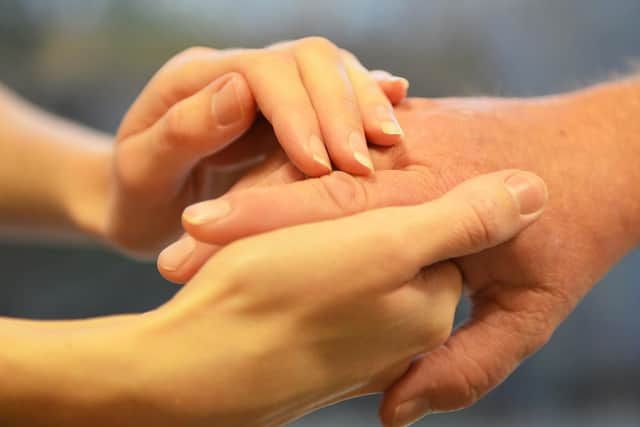New NHS service helping residents who have fallen in their own homes
and live on Freeview channel 276
The integrated home response and falls lifting service was set up in October 2019 to provide a non-emergency visiting response with home responders to help residents in Lancashire who have fallen in their own homes.
One third of adults over 65 who live at home will have at least one fall a year, but most falls do not result in serious injury. People who fall over at home and are unable to get up from the floor themselves - but have no other injuries – are now being referred to this service when they or a family member, carer, neighbour or friend call 999 or 111.
Advertisement
Hide AdAdvertisement
Hide AdReferrals are also made if the two council’s telecare services (Progress Housing Association and Vitaline) identify people require lifting by a home responder or a home response for a wellbeing check.


Since the service began, over 14,500 visits have been made (with more than 7,500 of those related to falls). This has resulted in more than 6,000 lifts being completed (as of August 2020).
Talib Yaseen, Executive Director of Transformation for Lancashire and South Cumbria Integrated Care System, said: “The excellent results already being seen over the last 11 months from this new falls lifting service is just one example of the partnership working happening across the county to make a real difference to the lives of residents across Lancashire.
"The organisations involved are already looking at how this can be expanded further to provide support to even more people who fall in their own homes.”
Advertisement
Hide AdAdvertisement
Hide AdThe service has helped to relieve pressure on the ambulance service, freeing it to attend more critical calls, by reducing the number of ambulance call outs and the potential need for a patient to be taken to an emergency department or be admitted to hospital.
The average waiting time for someone needing this lifting service is just under 26 minutes, much lower than a non-urgent ambulance call out.
Comment Guidelines
National World encourages reader discussion on our stories. User feedback, insights and back-and-forth exchanges add a rich layer of context to reporting. Please review our Community Guidelines before commenting.